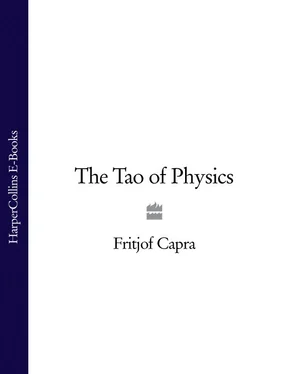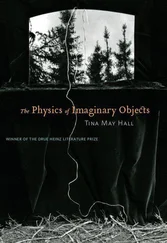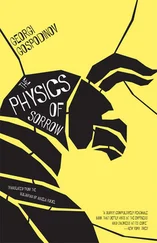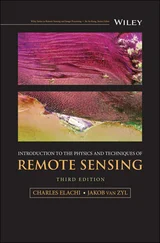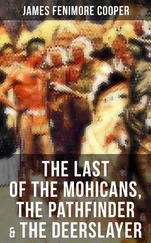The eighteenth and nineteenth centuries witnessed a tremendous success of Newtonian mechanics. Newton himself applied his theory to the movement of the planets and was able to explain the basic features of the solar system. His planetary model was greatly simplified, however, neglecting, for example, the gravitational influence of the planets on each other, and thus he found that there were certain irregularities which he could not explain. He resolved this problem by assuming that God was always present in the universe to correct these irregularities.
Laplace, the great mathematician, set himself the ambitious task of refining and perfecting Newton’s calculations in a book which should ‘offer a complete solution of the great mechanical problem presented by the solar system, and bring theory to coincide so closely with observation that empirical equations would no longer find a place in astronomical tables’. 10 The result was a large work in five volumes, called Mécanique Céleste in which Laplace succeeded in explaining the motions of the planets, moons and comets down to the smallest details, as well as the flow of the tides and other phenomena related to gravity. He showed that the Newtonian laws of motion assured the stability of the solar system and treated the universe as a perfectly self-regulating machine. When Laplace presented the first edition of his work to Napoleon—so the story goes—Napoleon remarked, ‘Monsieur Laplace, they tell me you have written this large book on the system of the universe, and have never even mentioned its Creator.’ To this Laplace replied bluntly, ‘I had no need for that hypothesis.’
Encouraged by the brilliant success of Newtonian mechanics in astronomy, physicists extended it to the continuous motion of fluids and to the vibrations of elastic bodies, and again it worked. Finally, even the theory of heat could be reduced to mechanics when it was realized that heat was the energy created by a complicated ‘jiggling’ motion of the molecules. When the temperature of, say, water is increased the motion of the water molecules increases until they overcome the forces holding them together and fly apart. In this way, water turns into steam. On the other hand, when the thermal motion is slowed down by cooling the water, the molecules finally lock into a new, more rigid pattern which is ice. In a similar way, many other thermal phenomena can be understood quite well from a purely mechanistic point of view.
The enormous success of the mechanistic model made physicists of the early nineteenth century believe that the universe was indeed a huge mechanical system running according to the Newtonian laws of motion. These laws were seen as the basic laws of nature and Newton’s mechanics was considered to be the ultimate theory of natural phenomena. And yet, it was less than a hundred years later that a new physical reality was discovered which made the limitations of the Newtonian model apparent and showed that none of its features had absolute validity.
This realization did not come abruptly, but was initiated by developments that had already started in the nineteenth century and prepared the way for the scientific revolutions of our time. The first of these developments was the discovery and investigation of electric and magnetic phenomena which could not be described appropriately by the mechanistic model and involved a new type of force. The important step was made by Michael Faraday and Clerk Maxwell—the first, one of the greatest experimenters in the history of science, the second, a brilliant theorist. When Faraday produced an electric current in a coil of copper by moving a magnet near it, and thus converted the mechanical work of moving the magnet into electric energy, he brought science and technology to a turning point. His fundamental experiment gave birth, on the one hand, to the vast technology of electrical engineering; on the other hand, it formed the basis of his and Maxwell’s theoretical speculations which, eventually, resulted in a complete theory of electromagnetism. Faraday and Maxwell did not only study the effects of the electric and magnetic forces, but made the forces themselves the primary object of their investigation. They replaced the concept of a force by that of a force field, and in doing so they were the first to go beyond Newtonian physics.
Instead of interpreting the interaction between a positive and a negative charge simply by saying that the two charges attract each other like two masses in Newtonian mechanics, Faraday and Maxwell found it more appropriate to say that each charge creates a ‘disturbance’, or a ‘condition’, in the space around it so that the other charge, when it is present, feels a force. This condition in space which has the potential of producing a force is called a field. It is created by a single charge and it exists whether or not another charge is brought in to feel its effect.
This was a most profound change in our conception of physical reality. In the Newtonian view, the forces were rigidly connected with the bodies they act upon. Now the force concept was replaced by the much subtler concept, of a field which had its own reality and could be studied without any reference to material bodies. The culmination of this theory, called electrodynamics, was the realization that light is nothing but a rapidly alternating electromagnetic field travelling through space in the form of waves. Today we know that radio waves, light waves or X-rays, are all electromagnetic waves, oscillating electric and magnetic fields differing only in the frequency of their oscillation, and that visible light is only a tiny fraction of the electromagnetic spectrum.
In spite of these far-reaching changes, Newtonian mechanics at first held its position as the basis of all physics. Maxwell himself tried to explain his results in mechanical terms, interpreting the fields as states of mechanical stress in a very light space-filling medium, called ether, and the electromagnetic waves as elastic waves of this ether. This was only natural as waves are usually experienced as vibrations of something; water waves as vibrations of water, sound waves as vibrations of air. Maxwell, however, used several mechanical interpretations of his theory at the same time and apparently took none of them really seriously. He must have realized intuitively, even if he did not say so explicitly, that the fundamental entities in his theory were the fields and not the mechanical models. It was Einstein who clearly recognized this fact fifty years later when he declared that no ether existed and that the electromagnetic fields were physical entities in their own right which could travel through empty space and could not be explained mechanically.
At the beginning of the twentieth century, then, physicists had two successful theories which applied to different phenomena: Newton’s mechanics and Maxwell’s electrodynamics. Thus the Newtonian model had ceased to be the basis of all physics.
The first three decades of our century changed the whole situation in physics radically. Two separate developments—that of relativity theory and of atomic physics—shattered all the principal concepts of the Newtonian world view: the notion of absolute space and time, the elementary solid particles, the strictly causal nature of physical phenomena, and the ideal of an objective description of nature. None of these concepts could be extended to the new domains into which physics was now penetrating.
At the beginning of modern physics stands the extraordinary intellectual feat of one man: Albert Einstein. In two articles, both published in 1905, Einstein initiated two revolutionary trends of thought. One was his special theory of relativity, the other was a new way of looking at electromagnetic radiation which was to become characteristic of quantum theory, the theory of atomic phenomena. The complete quantum theory was worked out twenty years later by a whole team of physicists. Relativity theory, however, was constructed in its complete form almost entirely by Einstein himself. Einstein’s scientific papers stand at the beginning of the twentieth century as imposing intellectual monuments—the pyramids of modern civilization.
Читать дальше
